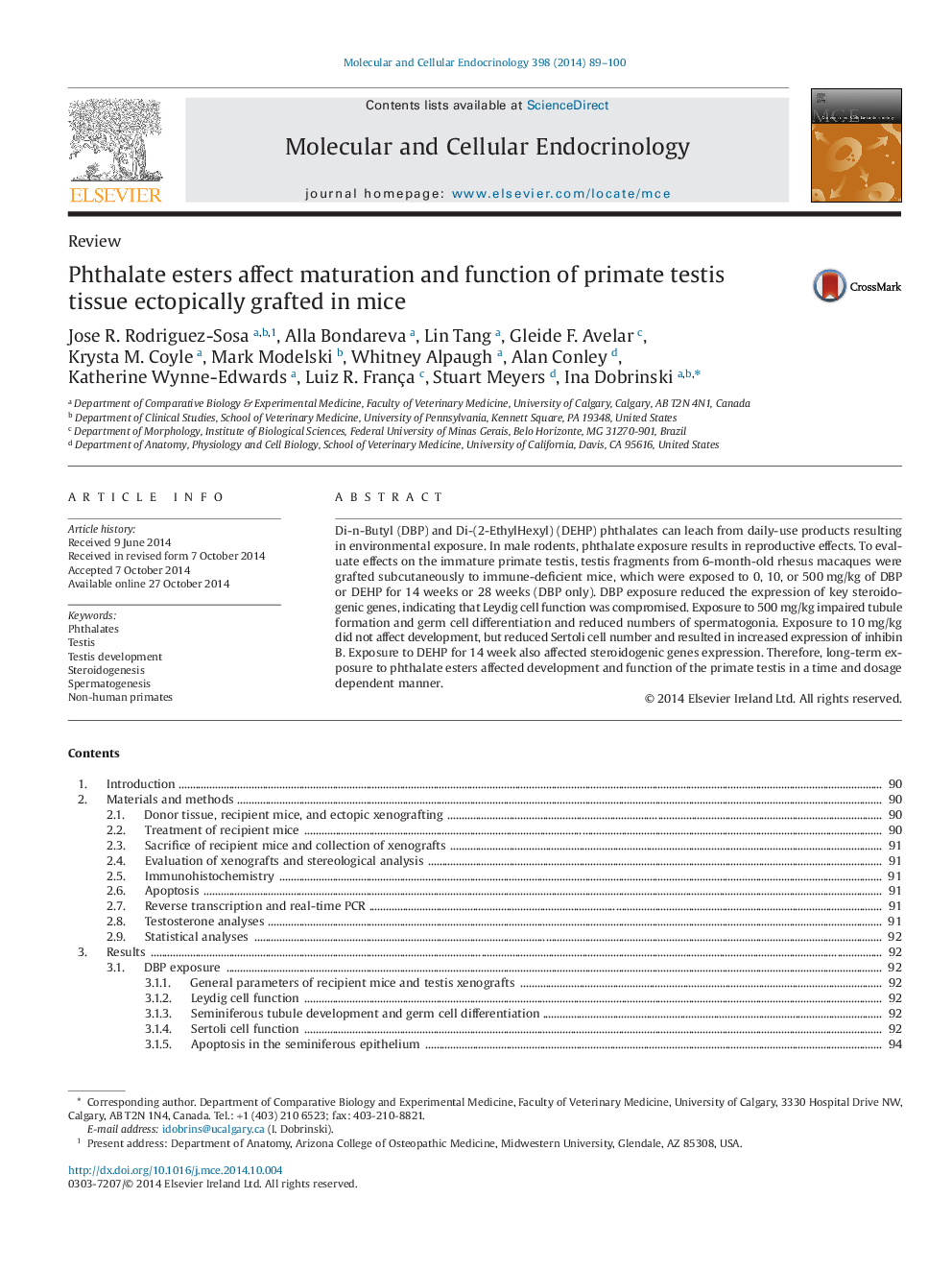| Article ID | Journal | Published Year | Pages | File Type |
|---|---|---|---|---|
| 2195921 | Molecular and Cellular Endocrinology | 2014 | 12 Pages |
•Phthalate esters can leach from plastic products leading to environmental exposure.•In fetal rats phthalate exposure causes abnormal development of the male reproductive tract.•Development of immature primate testis exposed to phthalates was studied after xenografting to mouse hosts.•Long term exposure to phthalates reduced steroidogenic gene expression in a dosage and time dependent manner.•Exposure to phthalates affected Sertoli cell number and germ cell differentiation in a dosage and time dependent manner.•The developing primate testis is sensitive to phthalates at levels relevant to human exposure.
Di-n-Butyl (DBP) and Di-(2-EthylHexyl) (DEHP) phthalates can leach from daily-use products resulting in environmental exposure. In male rodents, phthalate exposure results in reproductive effects. To evaluate effects on the immature primate testis, testis fragments from 6-month-old rhesus macaques were grafted subcutaneously to immune-deficient mice, which were exposed to 0, 10, or 500 mg/kg of DBP or DEHP for 14 weeks or 28 weeks (DBP only). DBP exposure reduced the expression of key steroidogenic genes, indicating that Leydig cell function was compromised. Exposure to 500 mg/kg impaired tubule formation and germ cell differentiation and reduced numbers of spermatogonia. Exposure to 10 mg/kg did not affect development, but reduced Sertoli cell number and resulted in increased expression of inhibin B. Exposure to DEHP for 14 week also affected steroidogenic genes expression. Therefore, long-term exposure to phthalate esters affected development and function of the primate testis in a time and dosage dependent manner.
